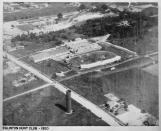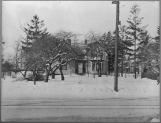1
The Move to North TorontoIn 1889, the predominantly agricultural Village of North Toronto was incorporated by combining the hitherto unincorporated villages of Eglinton and Davisville. By 1890 North Toronto became an incorporated town, with a population of 1,000. Its boundaries stretched from Merton Street in the south, to Glen Echo in the north; from Bayview Avenue in the east, to Avenue Road on the west. However the pressure of a growing metropolis proved too much for a smaller town in desperate need of infrastructure: the town was annexed in December 15, 1912 to the City of Toronto.
At about the same time, developers began building subdivisions like Lawrence Park (500 acres at Yonge Street and Lawrence Avenue), that would be "high-class suburban sites" with meandering, landscaped roads. These kinds of developments helped catapult the small agricultural feel of North Toronto into a desirable upper-middle-class part of Toronto - a perfect neighbourhood for the next (permanent) Havergal College location at the south-east corner of Avenue Road and Lawrence Avenue.
3
Eglinton Park skating rinkCirca 1920
Eglinton Park, Toronto, Ontario, Canada
 Credits:
Credits:Toronto Reference Library
4
Looking north on Yonge Street at Glengrove Avenue1922
Yonge Street, Toronto, Ontario, Canada
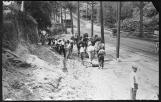 Credits:
Credits:Toronto Reference Library
6
St Clement's Anglican Church at Eglinton AvenueApril 1925
North Toronto. Ontario, Canada
 Credits:
Credits:Toronto Reference Library
7
TTC StreetcarJuly 1939
Eglinton Avenue, Toronto, Ontario, Canada
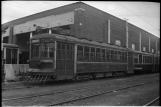 Credits:
Credits:Toronto Reference Library
8
Avenue Road, looking north from Glencairn Avenue (towards Havergal College)July 1939
Avenue Road, Toronto, Ontario, Canada
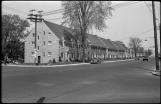 Credits:
Credits:Toronto Reference Library
9
Plans for a New SchoolIn 1923, the board had the foresight to purchase twenty-seven acres in the northern part of Toronto for $162,000. The land, previously the Anderson family farm ('Northdale'), and part of the Glengrove Golf Links golf club, was located at the cross-roads of Avenue Road and Lawrence Avenue. The old golf clubhouse still stands, at 250 Glenview Avenue.
The original architectural rendering was spectacularly Oxbridge in scale, and reflected the British ideals of education in place at the school. Due to a number of uneven real estate decisions with the other properties around the city, costs had to be dramatically reduced, and only part of the plans were carried out.
10
Architectural plan for the Lawrence Park locationCirca 1923
Avenue Road, Toronto, Ontario, Canada
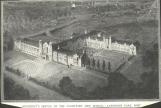 Credits:
Credits:Mary Naughton 1937 Photograph Album
Dr. Catherine Steele 1928 Archives, Havergal College
11
Path to the 'New School' at Lawrence ParkCirca 1927
Avenue Road, Toronto, Ontario, Canada
 Credits:
Credits:Dr. Catherine Steele 1928 Archives, Havergal College
12
Programme from Cornerstone Laying, New Building in Lawrence Park West23 April 1926
Avenue Road, Toronto, Ontario, Canada
 Credits:
Credits:Hahn Fonds
Dr. Catherine Steele 1928 Archives, Havergal College
13
The 'Lawrence Park' School OpensBy 1939, North Toronto had a population of 60,000, and a great increase in school-age youth echoed a similar pattern across the city (mainly due to new mandatory attendance legislation, as well as a near elimination in the use of child labour). Several other high schools were by then in operation in the area: North Toronto Collegiate Institute (1912), Northern Vocational School (1930) and Lawrence Park Collegiate (1936).
When the new school in North Toronto opened on 17 September 1926, finishing touches were frantically being completed. The principal, Marion Wood, would later describe the scene: "...the water was not yet connected, there was only a temporary telephone service outside, no schoolrooms were finished, building material was everywhere ... [One brave mother] who, bringing her daughter twenty-four hours early by mistake, and finding the household still having meals at the farm opposite, owing to the lack of a kitchen stove, yet dared to leave Doris - nay after spending the night, next morning picked up a broom and joined lustily in the general attack on the disorder."
14
The 'New School' at Lawrence Park - 'mid the mud'1926
Avenue Road, Toronto, Ontario, Canada
 Credits:
Credits:Marian Rooke 1928
Dr. Catherine Steele 1928 Archives, Havergal College
